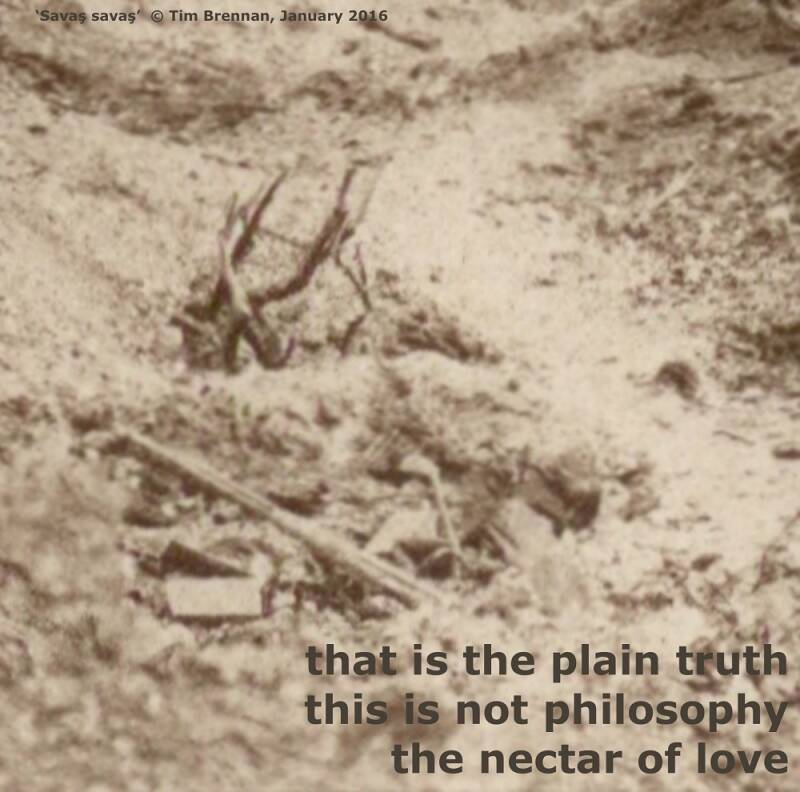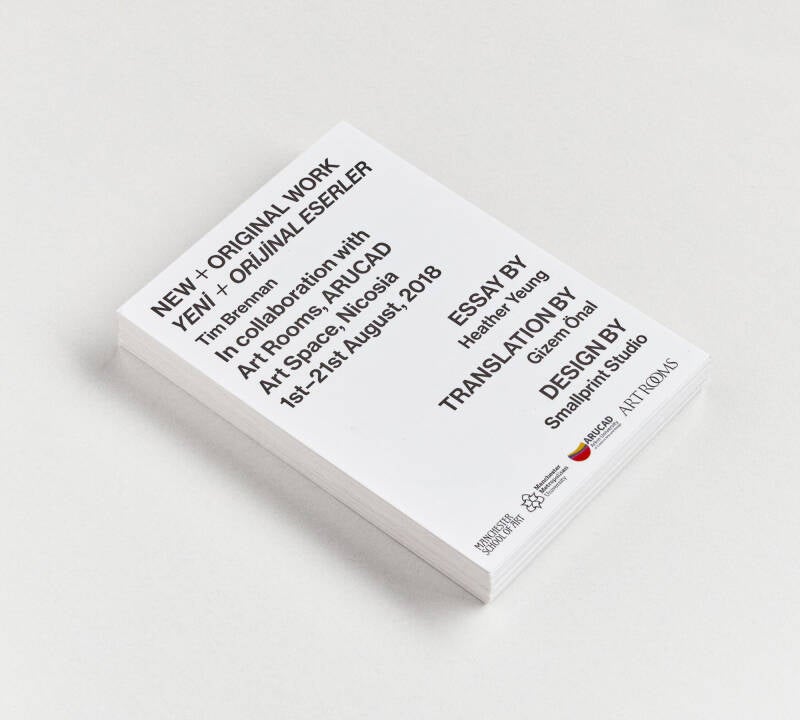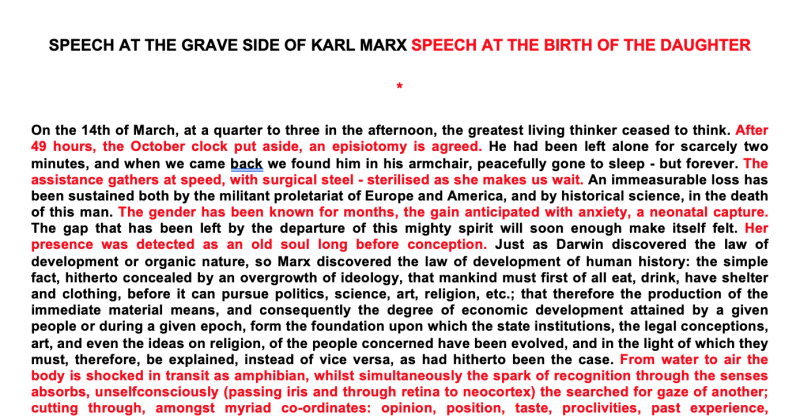NEW + ORIGINAL WORK
A Polyvalent Exhibition and Edition
Art Rooms, Nicosia, Cyprus
NEW + ORIGINAL WORK signalled a significant point in the recalibration of my practice — not as a retrospective, but as a living archive, a shuffled poetics of past and present. First exhibited at Art Rooms in Nicosia, Cyprus, in 2018, the exhibition staged three decades of work not through a chronology of achievements, but through a grammar of recurrence. At its core was a boxed edition of Trids — works composed through triadic relations of image, text, and utterance. These were not captions or documentation. They were artworks: portable, repeatable, reshufflable.

Poetics & Intentions - NEW + ORIGINAL WORK marks a decisive moment in my practice — not a retrospective in the conventional sense, but a recalibration. The exhibition gathers fragments from over three decades of work, yet resists chronology. Instead, it privileges circulation, encounter, and return.
At its centre is a box of postcards, each bearing what I then termed a Vishaiku — a triadic composition of image and text. These are not illustrations, but inscriptions: layers that both reflect and refract my practice across time. The Vishaiku form, drawn from ancient druidic and poetic structures, has since evolved into what I now call the Trid — a grammar of recurrence, association, and ritual. It offers not explanation, but invocation.
This approach challenges the conventions of gallery display and the fixity of the archival record. Here, performance meets publication, ephemera becomes central, and the reader becomes participant. The exhibition itself is a proposition: that artistic practice might be distributed, temporal, and co-authored. Not an end-point, but a field of ongoing attention.
In this spirit, NEW + ORIGINAL WORK is not just an exhibition, but a form of transmission. It is a practice that returns to its own traces, and one that continues — in the hand, the inbox, the footstep, and the field.

The exhibition resisted the traditional retrospective logic of fixity, hierarchy, and enclosure. Instead, it foregrounded multiplicity, movement, and the interplay between voice, image, and place. At the heart of the edition sat a new essay by Heather H. Yeung — itself distributed across the cards, its paragraphs embedded as fragments in the visual field. This allowed the essay to be read in any order, reordered by the hand of the viewer-reader, and carried away.



The work was accompanied by an essay by Heather Yeung, written as a parallel text and dispersed in sections across the reverse of the postcards. Each fragment could be read in any order, maintaining its coherence while inviting shuffle and return — echoing the triadic form’s mobility and recurrence. Yeung’s reflection situates the project within a larger cosmology of correspondence and motion:
“A common two-body problem in physics is that of which the result is an ellipse. The ellipse will always have more than one focus. Kepler set this down vis-à-vis the earth and its orbit of the sun, changing the way in which we viewed the universe. I view Tim Brennan’s work as a work of orbit, of ellipse: he will carry out moments (or movements) which are co-respondent to our own and we will return. His works are letters, if you will, to a universal. Our rule, NEW + ORIGINAL WORK is that of the secondary body, witness to the primary force.”
Yeung’s words remind us that the work’s orbit is reciprocal — an exchange of forces between artist and reader, motion and attention. Many Trids (and earlier Vishaiku) operate as such ellipses: ongoing correspondences, drawn again and again by gravity and return.
The triadic poetry — once termed Vishaiku in earlier institutional publicity — is more usefully understood within a longer heritage: Druidic triads, ritual utterance, topogrammatical incantation. In recent years this form has evolved into the Trid, a continuing practice of triadic composition. These are not aphorisms but invocations, binding image, site, language, and time — works that re-enter their own histories, reconstituting what was past as living present.
Other works in the exhibition included:
-
SPEECH AT THE GRAVE SIDE OF KARL MARX : SPEECH AT THE BIRTH OF THE DAUGHTER
A textual performance that overlays Engels' eulogy with the arrival of my daughter. A crossing of public and personal ritual; a fusion of histories lived and remembered.

detail of SPEECH AT THE GRAVE SIDE OF KARL MARX : SPEECH AT THE BIRTH OF THE DAUGHTER, Friedrich Engels/Tim Brennan, March 17th 1883/2018. Single page graveyard poem available as a PDF downlaod via the Editions Store
-
GALLIPOLI MIRROR
A poem-film collaboration with poet Heather H. Yeung, conceived in 2016 while we were based in New Zealand and Turkey. The work draws together the landscapes and legacies of the Dardanelles campaign, mapping sites of memorial and mourning through the poetic form. It operates as transmission — not illustration — and critiques the aestheticisation of war remembrance.
Gallipoli Mirror video, 13mins 11secs, Tim Brennan & Heather H. Yeung, 2017
NEW + ORIGINAL WORK stands as both a survey and a proposition. It reflects my shift toward a distributive, post-institutional, and polyvalent form of visibility. The exhibition became a place not of display, but of encounter — where the postcard, the fieldnote, the poetic shard took precedence over the framed work or wall text.
This project also prefigures the logic of Treatise 1, and can be understood as a precursor to the distributed, field-based, and publishing-oriented practice that now defines my work.
The edition of 100 boxed postcard sets (ISBN 978-9925-7410-2-1), signed and numbered, is available by request from the Editions Store.
Create Your Own Website With Webador